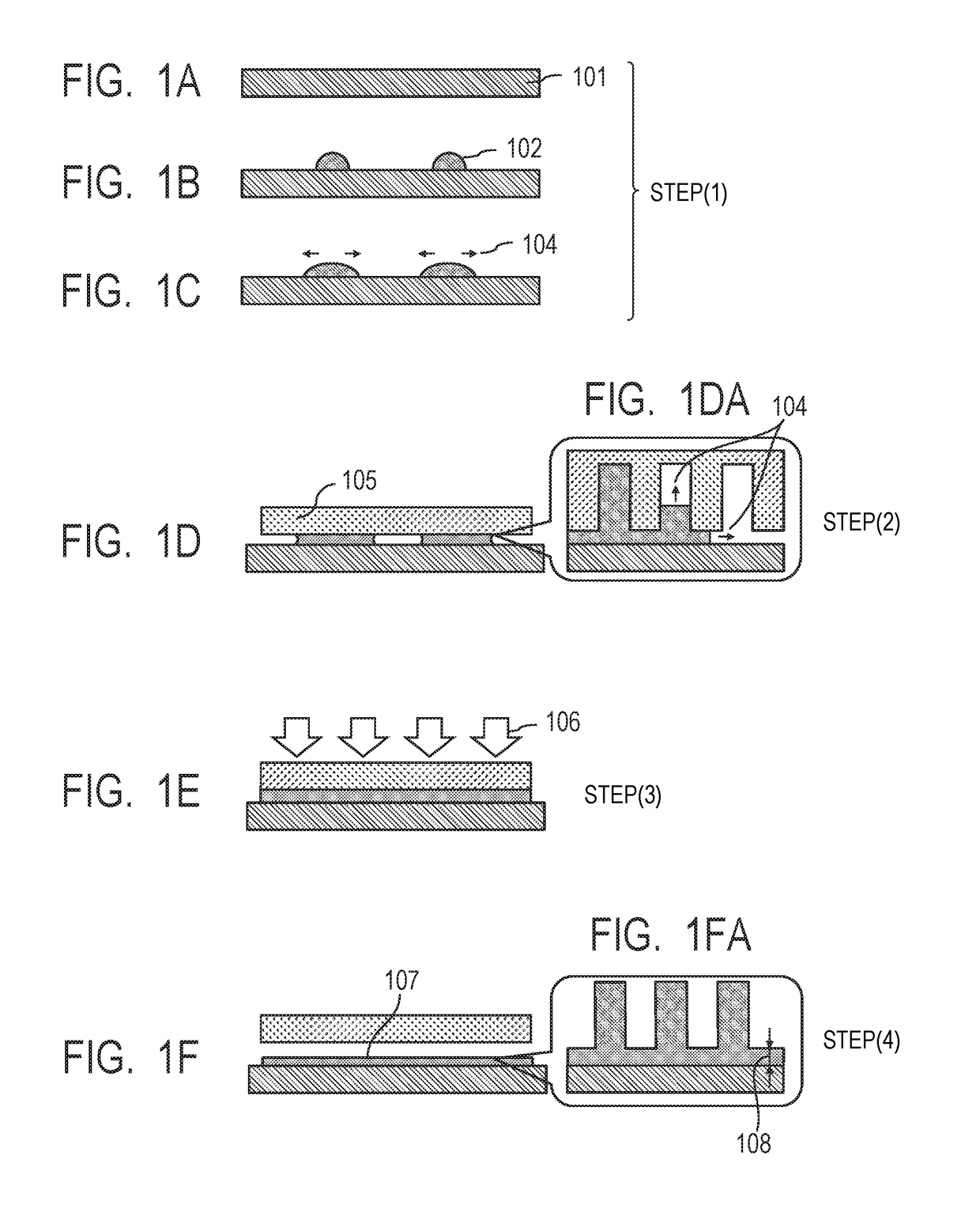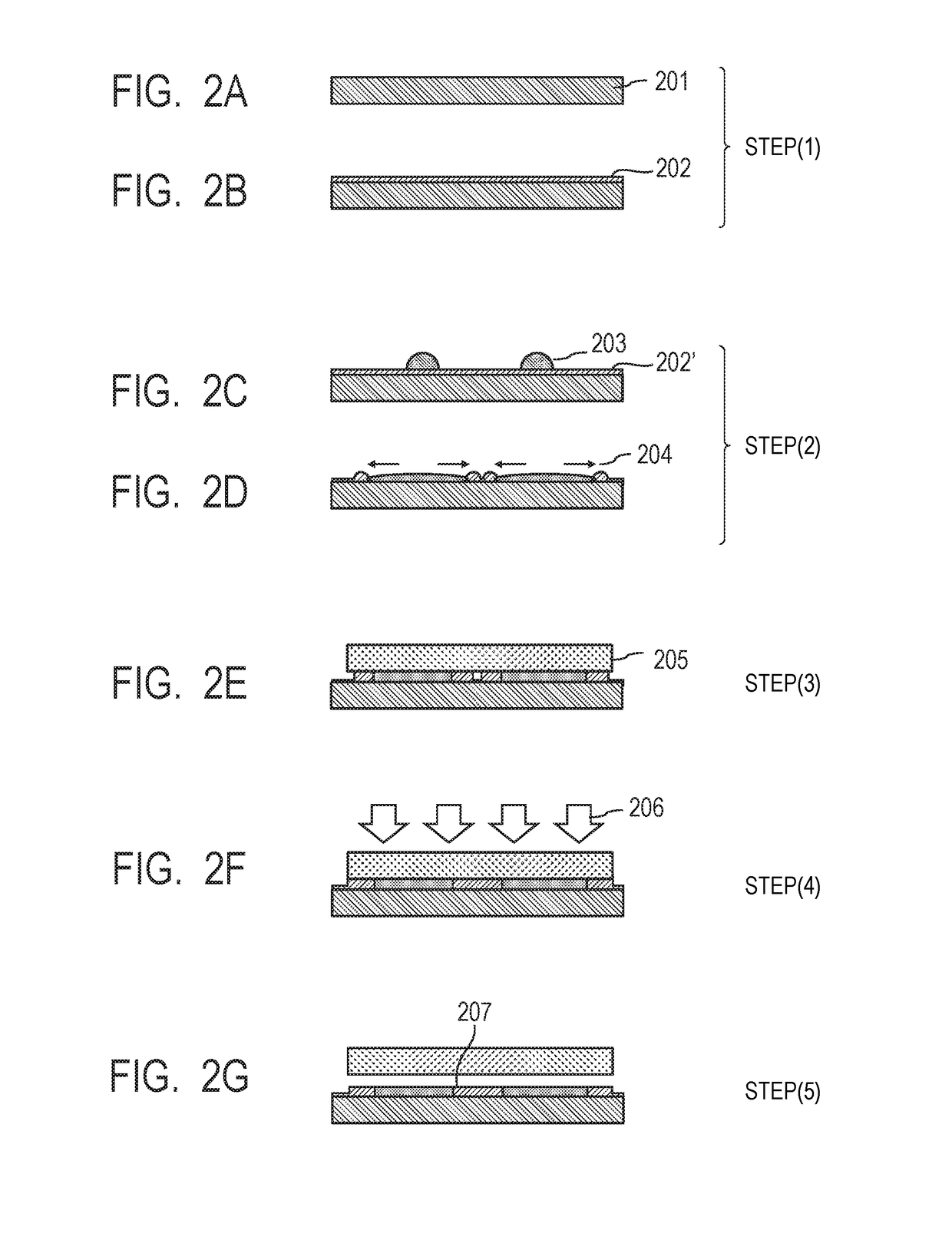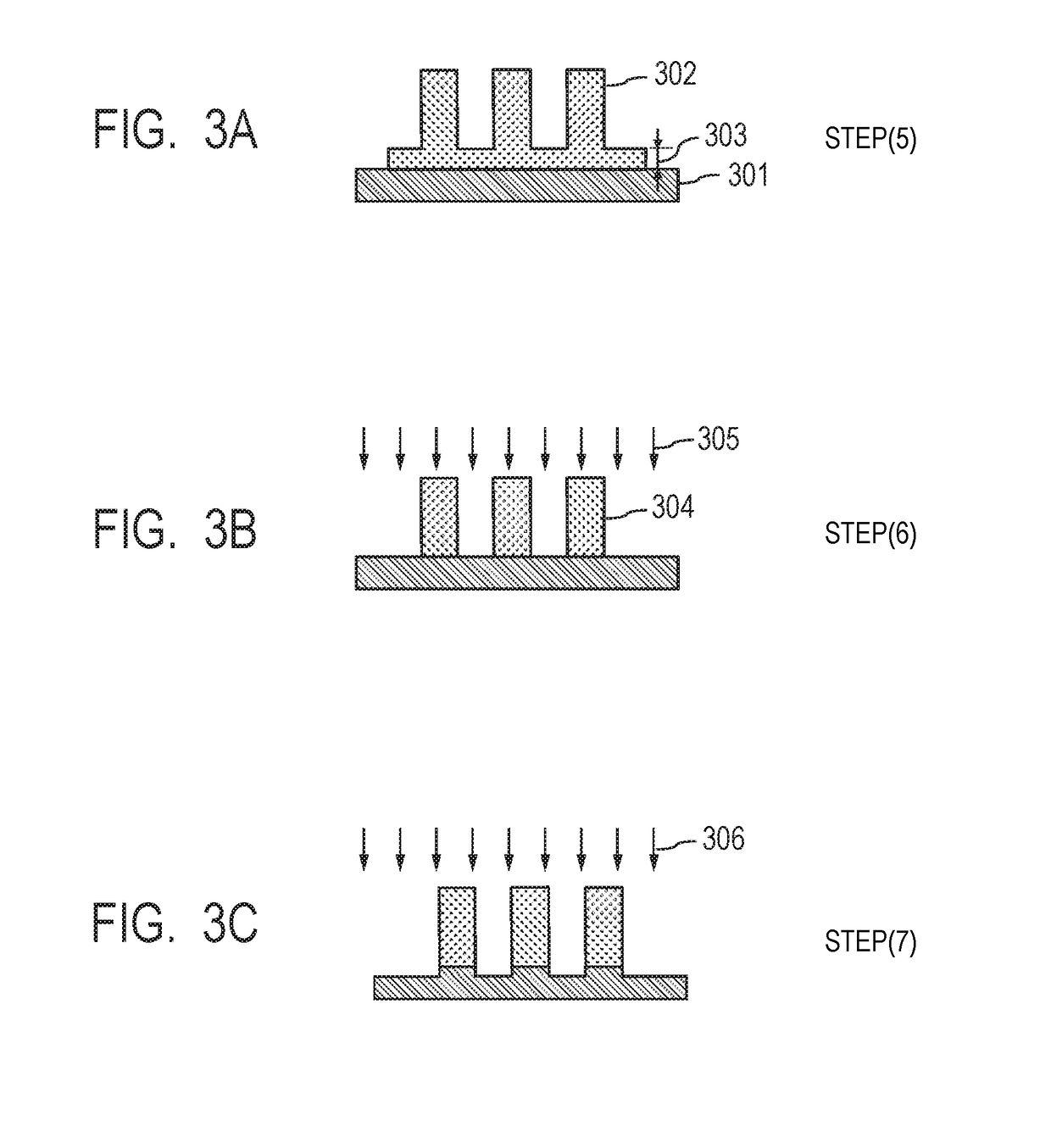Method of forming pattern of cured product as well as production methods for processed substrate, optical component, circuit board, electronic component, imprint mold and imprint pretreatment coating material
a technology of cured products and patterns, applied in the field of forming patterns of cured products, can solve the problems of long filling and low throughput, and achieve the effect of improving the yield (throughput) of the sst-nil process and significantly reducing the yield
- Summary
- Abstract
- Description
- Claims
- Application Information
AI Technical Summary
Benefits of technology
Problems solved by technology
Method used
Image
Examples
example 1
[0253](1) Preparation of Curable Composition (α1-1)
[0254]A component (A), a component (B), a component (C), and a component (D) described below were blended, and the blend was subjected to circulation filtration with an ion filter, a 10-nanometer nylon filter, and a 5-nanometer HDPE filter. The circulation filtration was performed for a time period corresponding to about 8 passes (the time period is equal to a liquid delivering period that eight times volume of the filtrate is processed) to prepare a curable composition (α1-1) of Example 1.
(1-1) Component (A):100parts by weight in total 1,12-Dodecanediol diacrylate100parts by weight(manufactured by Wanda Science):(1-2) Component (B):0parts by weight in totalThe component (B) was not added.(1-3) Component (C):0parts by weight in totalThe component (C) was not added.(1-4) Component (D):33,000parts by weight in totalPropylene glycol monomethyl33,000parts by weightether acetate (manufactured byTokyo Chemical Industry Co.,Ltd., abbreviat...
example 2
[0258](1) Preparation of Curable Composition (α1-2)
[0259]A curable composition (α1-2) was prepared in the same manner as in Example 1 except that the component (A) was changed to 30 parts by weight of 1,12-dodecanediol diacrylate (manufactured by Wanda Science) and 70 parts by weight of dimethyloltricyclodecane diacrylate (manufactured by Sartomer, trade name: SR833s).
[0260](2) Measurement of Number Concentration of Particles in Curable Composition (α1-2)
[0261]The number concentration of particles was measured in the same manner as in Example 1. The number concentration (average) of particles each having a particle diameter of 0.07 μm or more in the curable composition (α1-2) was 36.5 particles / mL.
example 3
[0262](1) Preparation of Curable Composition (α2-1)
[0263]A component (A), a component (B), a component (C), and a component (D) described below were blended, and the blend was subjected to circulation filtration with an ion filter, a 10-nanometer nylon filter, and a 5-nanometer HDPE filter. The circulation filtration was performed for a time period corresponding to about 8 passes to prepare a curable composition (α2-1) of Example 3.
(1-1) Component (A):94parts by weight in total Isobornyl acrylate9.0parts by weight(manufactured by Kyoeisha ChemicalCo., Ltd., trade name: IB-XA): Benzyl acrylate (manufactured38.0parts by weightby Osaka Organic Chemical IndustryLtd., trade name: V#160): Neopentyl glycol diacrylate47.0parts by weight(manufactured by Kyoeisha ChemicalCo., Ltd., trade name: NP-A):(1-2) Component (B):3parts by weight in total Lucirin TPO3parts by weight(manufactured by BASF):(1-3) Component (C):2.1parts by weight in total SR-730 (manufactured by1.6parts by weightAoki Oil In...
PUM
| Property | Measurement | Unit |
|---|---|---|
| particle diameter | aaaaa | aaaaa |
| width | aaaaa | aaaaa |
| width | aaaaa | aaaaa |
Abstract
Description
Claims
Application Information
 Login to View More
Login to View More - R&D
- Intellectual Property
- Life Sciences
- Materials
- Tech Scout
- Unparalleled Data Quality
- Higher Quality Content
- 60% Fewer Hallucinations
Browse by: Latest US Patents, China's latest patents, Technical Efficacy Thesaurus, Application Domain, Technology Topic, Popular Technical Reports.
© 2025 PatSnap. All rights reserved.Legal|Privacy policy|Modern Slavery Act Transparency Statement|Sitemap|About US| Contact US: help@patsnap.com



